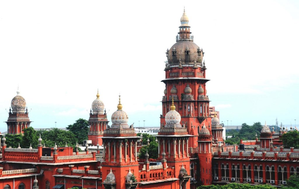Examining feasibility of online voting in India
New Delhi, Aug 20 (IANS) India, the world’s largest democracy, faces an intricate challenge in conducting elections at an unparalleled scale. The traditional voting process, characterised by extensive logistical arrangements, significant costs, and substantial length of time, needs transformation.
As India rapidly embraces digital advancements across various sectors, implementing online voting emerges as a timely and essential reform. This need for change is underscored by a 2024 article in The Economist, which, citing the Centre for Media Studies (CMS), reveals that the cost of the election has ballooned to 1.35 lakh crore rupees, making it the most expensive in the world. This staggering figure places India ahead of the most advanced nations like the US, where the total poll expenditure touched 1.2 lakh crore. With an astonishing Rs 700 spent per vote, India’s 2024 election spending is set to break records, raising questions about democracy and economic implications.
Online voting represents a transformative shift in the electoral process, leveraging digital technology to streamline and enhance citizens’ participation in democracy. Compared to traditional voting methods, online voting offers numerous advantages, including increased accessibility, enhanced security, and greater convenience. It will eliminate geographical barriers, allowing voters to cast their ballots from any location, which is particularly beneficial for individuals with mobility issues, and youth with educational or work commitments away from home. Security features such as encryption, biometric verification, and facial recognition will ensure the integrity and confidentiality of each vote, significantly reducing the risk of fraud. Furthermore, online voting can lower costs by reducing the need for physical polling infrastructure and materials while promoting environmental sustainability by eliminating paper ballots. Given these advantages, India, with its vast and diverse electorate, stands to gain immensely from adopting online voting, making the electoral process more inclusive, efficient, and resilient in the face of logistical challenges.
The feasibility of online voting in India is underscored by the nation’s advancements in digital technology. The robust infrastructure supporting millions of secure online transactions daily in the banking sector is a testament to India’s ability to handle online voting securely. For instance, the cost of making a secure online transaction of a value greater than Rs 2 lakh is approximately Rs 25 (Typical cost of NEFT transaction). Therefore, it is evident that banks already have mechanisms in place for ensuring the verification and safety of transactions of high monetary value. It is therefore possible to have similar verification and safety systems for voting at a cost much lower than Rs 700 per vote. Thereby, a financial savings case can be made.
Modern encryption techniques, multi-factor authentication, and continuous cybersecurity measures can safeguard voter data, ensuring the integrity and confidentiality of the electoral process. Traditional voting methods incur substantial expenses related to setting up polling stations, deploying security personnel, and managing logistics. Online voting can drastically reduce these costs by eliminating the need for physical infrastructure, thereby allowing resources to be redirected toward enhancing digital infrastructure and ensuring widespread internet access.
Accessibility is a fundamental aspect of a democratic electoral process, and online voting can significantly enhance it. One persistent challenge in Indian elections is ensuring that every eligible voter, especially those in remote or hard-to-reach areas, can participate. With the 2024 general election reaching unprecedented scale, as highlighted by a BBC article in June 2024, the challenge of ensuring every eligible voter—totalling 969 million—can participate has become increasingly urgent. Online voting offers a practical solution to effectively bridge this gap. With increasing smartphone penetration and expanding internet access, even voters in the most isolated regions can participate in the electoral process without the burden of travelling long distances to polling stations. This digital approach also promotes inclusive participation by accommodating marginalised groups, including older people, differently-abled people, and those with mobility issues, who often face difficulties reaching traditional polling stations. By allowing these individuals to vote from the comfort of their homes, online voting ensures their voices are heard, fostering a more inclusive democracy.
Transparency and security are paramount in maintaining public trust in the electoral process. Traditional voting systems are vulnerable to various forms of electoral fraud, such as booth capturing and ballot tampering. Fortified with advanced security measures like encryption, facial recognition, and biometric verification, online voting can substantially mitigate these risks. Each vote can be traced and verified, enhancing the transparency and integrity of the electoral process. Furthermore, online voting will allow for real-time monitoring, promptly detecting and resolving any irregularities. Digital records of votes can be securely maintained, facilitating accurate and efficient recounts if necessary and thereby reinforcing the reliability of the electoral outcome.
Facial recognition technology, widely used in smartphones, can be a robust method for voter authentication, ensuring that only the legitimate voter can access the voting system. This technology, combined with biometric verification methods such as fingerprint scanning, adds an additional layer of security. Incorporating Know Your Customer (KYC) protocols, similar to those employed in the banking sector, can further enhance voter verification, ensuring that the person casting the vote is registered. This multi-factor authentication framework not only secures the voting process but also instils confidence among voters regarding the authenticity and accuracy of their participation.
The convenience offered by online voting can lead to a significant increase in voter turnout. Voters can cast their votes from any location and anytime within the voting period, providing unparalleled flexibility. This convenience is particularly beneficial for individuals with demanding schedules or those unable to visit polling stations physically. Immediate confirmation of the vote, akin to transaction alerts in online banking, will reassure voters that their vote has been successfully recorded, enhancing their confidence in the electoral process. This seamless and user-friendly experience can motivate citizens to participate in elections, strengthening the democratic process.
Online voting holds significant benefits for the youth of India, particularly for students and young professionals who are often geographically dispersed due to their academic and career commitments. Many young voters study in colleges in different states from their home constituencies or have work locations far from where they are registered to vote. Traditional voting methods require these individuals to return to their home areas to cast their ballots, which can be time-consuming and financially burdensome. Online voting eliminates this need by allowing them to vote from wherever they are, be it their college campus or workplace in another city. This convenience ensures their voices are heard without disrupting their educational or professional responsibilities. Furthermore, online voting can engage tech-savvy young voters more effectively, encouraging greater political participation among the youth. Gen Z, who are familiar with digital interfaces and accustomed to online transactions, will likely find an online voting system intuitive and easy to use, fostering a more engaged and politically active younger generation.
Despite its numerous advantages, implementing online voting in India is challenging. The digital divide, characterised by the disparity in access to digital technology, remains a significant hurdle. To address this, the government can initiate programs to provide affordable smartphones and internet access, ensuring that all voters can utilise the online voting system. Cybersecurity concerns, while valid, can be mitigated through robust encryption, regular security audits, and continuous monitoring. Collaborating with cybersecurity experts and learning from countries with successful online voting implementations, such as Estonia, can further bolster the system’s security. Additionally, extensive training programmes and awareness campaigns are essential to familiarise voters with the technology, ensuring they can navigate the system confidently. Providing support through helplines and local assistance centres can further aid voters, ensuring a smooth transition to online voting.
The transition to online voting in India holds immense potential to enhance the electoral process, making it more accessible, transparent, secure, and efficient. By leveraging existing technological advancements and learning from global examples, India can address the challenges and implement a robust online voting system. This shift is a step towards modernisation and a fundamental commitment to strengthening democracy by ensuring every citizen’s voice is heard. As India continues to innovate and digitise various sectors, integrating online voting into its electoral process is a logical and necessary progression. At the outline providing an option to vote online through a proper verification process can be the beginning of a new era in the democratic system. The Election Commission of India (ECI) is already recognised as a role model by several other countries due to its ability to conduct large, complex, and challenging elections. ECI must ensure that the electoral process in India evolves with new technological advancements and societal needs. Several politicians contend for paper-based elections by questioning the reliability of electronic voting machines, and they may extend their concerns to online voting systems as well. Nevertheless, it may be useful not to take regressive steps, embrace technological advancements, and adopt progressive solutions.
(Professor Dheeraj Sharma serves as the Director of IIM Rohtak)
–IANS
Dheeraj/kvd




